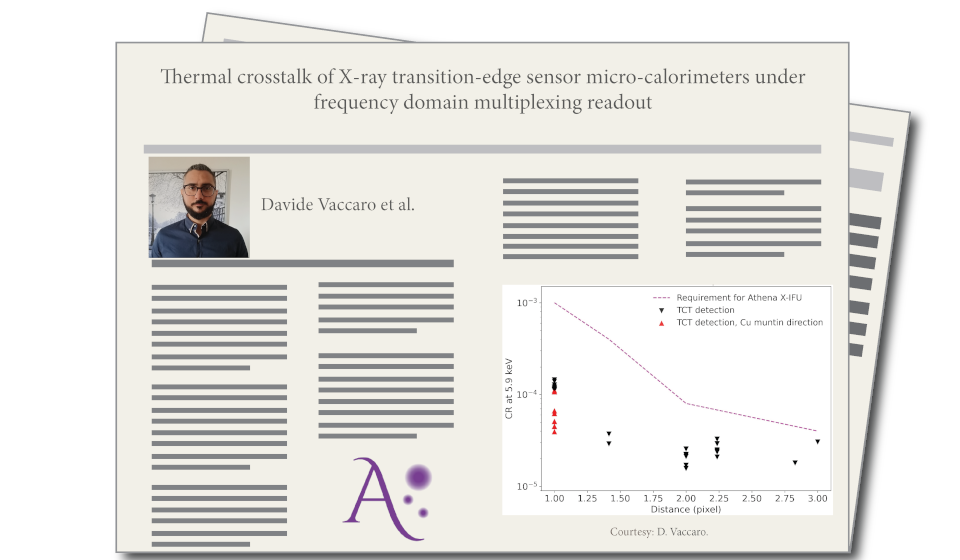
Thermal crosstalk of X-ray transition-edge sensor micro-calorimeters...

By Davide Vaccaro
The employment of thousands of transition-edge sensors in future space-borne astronomical and cosmological missions, such as the Athena/X-IFU instrument, will allow the pursuit of scientific breakthroughs in astronomical and cosmological observations.
A transition-edge sensor (TES) is a thin film of superconducting material weakly coupled to a thermal bath, which can be used as a very sensitive thermistor by exploiting its sharp superconducting-to-normal phase transition. In this way, TES arrays can be employed to detect incoming power from the sky (TES bolometer) or as single-photon detectors (TES micro-calorimeter). Due to stringent limitations in available cooling power in a space-borne instrument, the readout of large TES arrays is performed via multiplexing techniques. Athena X-IFU will employ ~ 3000 TES micro-calorimeters to detect X-rays in the 0.2 keV – 12 keV with an energy resolution of 2.5 eV at energies up to 7 keV.
Given the close proximity of the devices in the array, the energy released by a photon in one TES causes undesired thermal signals to manifest in neighbouring devices. Such thermal crosstalk can degrade the spectral performance of the TES array and spoil the instrumental energy resolution.
In this work, we characterize the thermal crosstalk of two different TES arrays using a Frequency-Domain Multiplexing (FDM) readout. Both the TES arrays and the FDM system have been developed at SRON. We show that the measured thermal crosstalk ratios are significantly lower than the requirements for Athena/X-IFU. Via a Monte Carlo simulation, we also estimate the impact on the instrumental energy resolution to be much less than the allocated budget for X-IFU.

